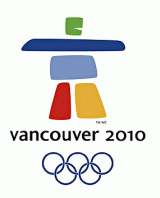 |
|
Women’s Hockey Endures Growing Pains New York Times (Online), New York: New York Times Company. Feb 17, 2010. VANCOUVER, British Columbia — In another one-sided women’s hockey match, Canada beat Sweden on Wednesday, 13-1. At 11-0, Canadian television stopped showing the game. The Canadians outshot the Swedes, 52-13, and the final scoresheet looked like an accountant’s ledger. Unless you were one of the Canadians in the arena, this one was painful. Unlike the Slovak, Chinese and Russian women, who were here frankly for the learning experience, the Swedes were supposed to be a contender. In 2006 they played Canada for the gold medal, losing by 4-1, and to get that far they upset the United States, 3-2, in a shootout. At the time the American women were stunned, but recently some holdovers from that team who are on the current squad conceded that Sweden’s win was good for women’s hockey in general, making the upper level more competitive. Blowouts are almost the rule these days in international women’s hockey. Observers still shellshocked by Canada’s 18-0 rout of Slovakia on Sunday are forgetting that to get here Slovakia beat Bulgaria, 82-0, in a qualifying game. Some columnists have been arguing that hockey ought to institute a mercy rule. Others would prefer to eliminate women’s hockey from the Olympics until the level of competition improves. But mismatches are like growing pains; they are almost inevitable in a young and developing sport. The early days of men’s hockey were just as one-sided: in 1924 the Canadian Olympic team outscored its rivals, 110-3. In hockey, goal differentials can determine which teams advance. This is why, much to the surprise of fans used to college and professional hockey, Switzerland’s men’s team, trailing the United States by 3-1, did not pull its goalie for an extra skater late in the game on Tuesday. “I am not so happy, I must say,” Rene Fasel, the International Ice Hockey Federation president, said a day after the United States women pounded China, 12-1. “But that’s the beginning of women’s hockey.” Talking about the men, he added: “I remember in the 1930s, Switzerland was beaten by Canada, 20-0. And in Torino, Switzerland beat Canada, 2-0. It took nearly 70 years to come on the same level, and the women are growing fast now.” When women’s hockey became an Olympic sport in 1998, Canada had a huge head start. The first recorded game between women in Canada took place at the end of the 19th century. Not that Canadian men were always happy to share their ice time. In a famous 1956 case, a 9-year-old named Abby Hoffman, who had cut her hair short and was calling herself Ab in order to play hockey, went all the way to the Ontario Supreme Court to assert her right to play on a boys’ team. She lost but has since become a national heroine, and the trophy awarded to the winner of the Canadian women’s national championship is named after her. The veterans on the United States women’s team all recalled last week that they had grown up playing with and against boys, but thought their younger teammates had benefited from being part of all-girl programs. Women’s hockey in the United States, like American women’s sports in general, got a huge boost in 1972 from the Title IX legislation, which effectively forced many schools and colleges with men’s hockey programs to start teams for women as well. Even now there are colleges and prep schools so hungry for accomplished female players that they are eager to grant them generous financial aid. The benefits of the United States’ hockey largess have even spread to Olympic competitors. Four members of the Canadian team play college hockey in the United States, and five Finns also compete in the N.C.A.A. The Slovak goalie, Zuzana Tomcikova, plays for Bemidji State in Minnesota. She said after the game against Canada that there were fewer than 300 female players in her country’s 10-year-old program and that the team felt proud to have made it to Vancouver. “We joined the big hockey family to learn,” her coach, Miroslav Karafiat, said through an interpreter. Hannu Saintula, whose Chinese team was thumped by the Americans, said much the same thing. The only way to get better is to play tough competition, he explained, and if one-sided games are the price, it is worth it. That the North American and Scandinavian countries and Finland are at the top of women’s hockey is not much of a surprise. They have fairly long histories of supporting women’s sports in general and are arguably among the most progressive countries in the world when it comes to ignoring the kind of gender stereotyping that holds that women are too delicate for strenuous sports. They also have more money to spend on women’s athletics. Why Russia, with its great hockey tradition and history of supporting women’s basketball and soccer, should have such a poorly financed, unsuccessful women’s hockey program remains a bit of a mystery. Linuo Wang, the captain of the Chinese women’s team, also grew up playing with boys, on frozen ponds in her native Harbin. She said that what is holding back Chinese women’s hockey is Chinese men. “Our men’s team is very, very bad,” she said, shaking her head. “When they get better, hockey in China will be more popular.” |
